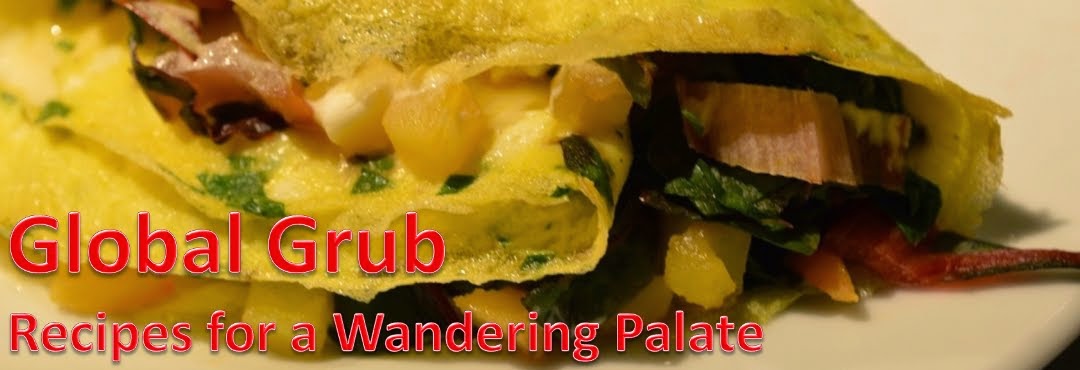If the British are known for one thing in their cooking, it's for being about as exciting as a toothache. But if you like meat and potatoes, forget about going anywhere else, because these folks have this market cornered. Bangers and mash, kippers and neeps (technically a turnip, but same deal), shepherd's pie, meat pasties - you name it, and folks from the mother land have taken a stab at it. And by and large, they screwed it up.
That's right, I said it. I entertain your rebuttal in the comments. Despite this, I still like British food, because sometimes a man needs to just eat a bunch of meat, served in stew form, with naught but the most basic of flavors. But in searching for a good Shepherd's Pie recipe, I came across some that I might feed to a dog, but none that I would feed to a diner who wants more than just 'people food'. So I had to borrow from the French and add some flavor to the recipes, as well as adjust the preparation method to get the most out of the different ingredients. I even tried to get fancy and pipe my potatoes on the top of the stew, but that didn't quite work out, as we shall see.
Shepherd's Pie is a simple recipe, consisting of a meat stew with a mashed potato crust. To be proper, I actually made a "Cottage Pie", since shepherd's don't really raise beef but mutton or lamb, but nobody calls it that so I'll stick to my guns on this one. The dish came about as a way to spread the usage of the potato as an edible staple for the poor in England - kind of like the American history of corn syrup (or, if you go back far enough, whiskey), but a little bit more wholesome.
 |
| The finished Shepherd's Pie, with one serving briefly removed and replaced before I remembered to take a picture |
Shepherd's (actually, Cottage) Pie
from nowhere in particular, designed by me for a change
from nowhere in particular, designed by me for a change
- 1 tablespoon vegetable oil
- 1 large onion, peeled and chopped
- 2 medium carrots, peeled and chopped
- 2 cloves garlic, chopped
- 1.5 pound ground lamb or beef
- 1 cup beef or chicken broth (use good stuff if you can - I used homemade stock)
- 1 tablespoon tomato paste
- 1 teaspoon chopped fresh or dry rosemary (fresh is greatly preferred)
- 1 cup dry red wine
- 1 cup frozen peas
- salt and pepper, to taste
- 2 pounds russet potatoes, peeled and cut into chunks
- 6 tablespoons unsalted butter
- 1/2 cup milk (any fat content)
- Kosher salt to taste
 |
| Get your ingredients ready. The list is fairly short. If you have mashed potatoes left over from something else, the list becomes even shorter. |
 |
| Grind your meat with a coarse blade. You don't have a meat grinder? Maybe your butcher will do it for you, if you flash a little skin. |
Preheat oven to 375°F.
In a large sauté pan over high heat, heat the oil and brown the meat in 1-2 batches. Season with salt and pepper during browning, and be sure to keep the heat high and not just boil the meat. You want to see some brown bits, even if it means things sticking to the pan for a while. Meanwhile, bring the potatoes to a boil in salted water. Cook until tender, about 20 minutes; drain.
To the pan with meat, add the onion and carrot, and cook until softened, 3-4 minutes. Add garlic, and cook until moisture has been released from onions and carrots are beginning to soften, another 4 minutes. Add the red wine and boil until liquid is mostly evaporated, 4-5 minutes. Add the broth, tomato paste, and rosemary, and reduce the heat. Simmer until the juices thicken, about 10 minutes, then add the peas.
To the pan with meat, add the onion and carrot, and cook until softened, 3-4 minutes. Add garlic, and cook until moisture has been released from onions and carrots are beginning to soften, another 4 minutes. Add the red wine and boil until liquid is mostly evaporated, 4-5 minutes. Add the broth, tomato paste, and rosemary, and reduce the heat. Simmer until the juices thicken, about 10 minutes, then add the peas.
 |
| Here's the mix, after reducing out the wine, browning the meat, and adding all of the vegetables and aromatics. |
Mash the potatoes with the butter, milk, and salt, and set aside. If you want to pipe them, prepare a piping bag after letting the potatoes cool slightly, and get a tip that will let you dispense a good bit of potato at once. Or, use my cheap method:
 |
| Don't have a piping bag? Use a zip-top. Just put the potato in... |
Spread or pipe the potatoes over the meat mixture, then crosshatch the top with a fork. Bake until golden, 30 to 35 minutes.
 |
| The 'pie', after dragging a fork to create a nice browning surface |
 |
| The finished pie, not quite as browned as I would like, but every bit as delicious as a hearty French stew |










